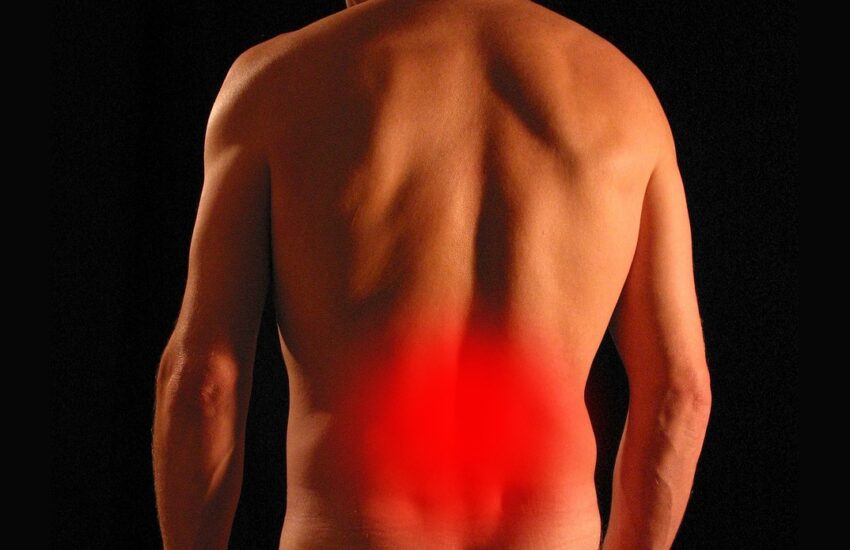Truly Alternative Health
The interesting thing about modern medicine is how many treatment options are intentionally ignored.
Here’s what I mean.
Just because we live in an age of intense technological progression doesn’t mean that what the ancient civilizations did to help people experience Health As It Ought To Be didn’t work.
The facts are (and I do mean actual, scientifically validated facts), that many of the things that people used in traditional medicine hundreds, even thousands of years ago, have therapeutic benefits.
Why do they work so well?
I’ll get into that, but it comes down to how societies of old knew how the body worked and were able to regulate its function.
On top of that, numerous newer therapies are brushed to the side because they don’t conform to Western medicine. These therapies have odd origination stories, but the evidence showing how well they work to modulate health is strong enough to show that they are anything but fringe.
Alternative health is often labeled as “quack science” and or “woo woo” (implying there is some mystical element or it exists on unsubstantiated claims).
And there certainly are elements of alternative health that are actually “woo woo” (like rubbing crystals together).
Yet the fact remains, that you can improve your health by turning to unconventional treatments.
In this article, all I’m going to do is talk about (not endorse) therapies that I believe should be at the very least considered in your quest to be the healthiest version of you.
6 Alternative Health Therapies Everyone Should Consider
Again, I need to reiterate I do not explicitly recommend these – unless you’re a patient of mine and I tell you to pursue X, Y, or Z.
But you are in charge of your health journey, and I can say that these therapies are at the very least safe and effective (as proven by many studies).
Ok, so let’s get into this.
1 – Chiropractic:
Chiropractic is easily one of the most well-known and popular of the fringe health therapies.
Chiropractic is a newcomer to the fringe health scene.
Chiropractic began in 1895 when Daniel David Palmer adjusted his deaf janitor after noticing vertebrae out of place and restored his hearing.
He then opened up a school of Chiropractic in Davenport, Iowa (where Dr. Lantelme’s oldest son now lives) and taught others how to adjust patients.
The premise of chiropractic is that the body is essentially a machine and if something falls out of place it’s best to adjust it back into place. Palmer said that spinal manipulation on joint dysfunction/subluxation leads to improved health.
Chiropractic was met with a ton of resistance and in 1963 the American Medical Association tried to add it to the list of “quackery.”
Many contend that there are no real studies to show that chiropractic is an effective way of modifying health, but that’s not true.
There are dozens upon dozens of studies – on top of thousands if not millions of anecdotal reports of chiropractic leading to serious health improvements. This is why you can confidently choose to get an adjustment and not feel like you’re being sold snake oil.
2 – Acupuncture:
Acupuncture is right up there with chiropractic as one of the more maligned healthcare practices.
Why?
Because people can’t get around the notion that sticking needles in your body could be anything but torture.
Acupuncture is one of the oldest treatment modalities in the world and is based on a theory that the body is an energetic being (which I’ve talked about numerous times) and that we can manipulate how pain is felt, or even cancel it, by inserting small needles across energy meridians in the body.
Here’s the deal.
Acupuncture will probably not cure you of a long-term condition that causes pain.
But for temporary pain, things you may take Tylenol for weeks or months to combat while it gets better, it may work.
As By Dov Michaeli, MD, PhD writes: “The Acupuncture Trialists’ Collaboration (not exactly a disinterested group) published the results of their meta-analysis, an update of a previous analysis. They found acupuncture to be moderately superior to sham acupuncture for non-specific musculoskeletal pain, osteoarthritis, chronic headache, and shoulder pain. They also found that the effects of acupuncture decreased by about 15% after one year. A review in Autonomic Neuroscience, among several other reviews, failed to show a difference between sham and real acupuncture… The most recent clinical practice guideline, published in 2017, found low to moderate evidence that acupuncture was effective for chronic low back pain, and limited evidence that it was effective for acute low back pain.”
Another study of women who had breast cancer and were taking medication to prevent the recurrence of breast cancer noted that acupuncture was able to offer a significant reduction in pain they felt that was attributed to the medication.
3 – EMDR:
I doubt you’ve heard of EMDR, and it’s not exactly “woo woo”. But when you see what it is, then you may find it hard to believe it could work.
EMDR stands for Eye Movement Desensitization and Reprocessing.
In essence, when EMDR is administered under the care of a professionally trained EMDR technician, the patient is asked to move their eyes rapidly from left to right to reprocess traumatic memories that continue to antagonize the patient.
EMDR works under the pretense that unprocessed memories arising from mental trauma are distressful primarily because a person never adequately processed the trauma. When a person reengages the memories, without the correct toolset, they will not be able to process said memories and will always experience negative emotions when they recall the past trauma.
EMDR serves as a tool to help people process trauma.
Surprisingly EMDR was discovered by mistake by a psychologist named Francine Shapiro back in 1987.
In her own experiences, Shapiro experienced dramatic relief from past trauma when she moved her eyes rapidly during recall, it “produced a dramatic relief from her distress” (Van Der Kolk, p. 253).
Through the use of EMDR, patients can revisit past traumatic experiences without painful re-creations which could otherwise result in re-traumatization.
Multiple studies support the effectiveness of EMDR, too.
Typically EMDR lasts 6-12 sessions, and studies indicate it doesn’t take many to achieve results.
A writer for Boston University showed the following:
“In a study of twelve individuals, Dr. Van Der Kolk found that after only three EMDR sessions, “eight of the twelve had shown a significant decrease in their PTSD scores” (Van Der Kolk, p. 256).”
Instead of jumping straight onto a prescription – this could help.
I’ll write a follow-up to this article soon!


